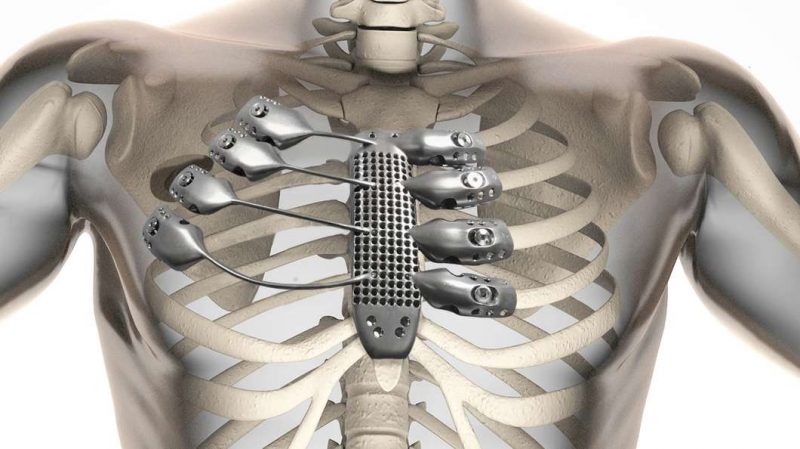
A cancer patient in Spain has received the world’s first custom, 3D-printed titanium sternum and ribcage implant. The technology was developed in Australia by scientists at CSIRO's 3D printing facility in conjunction with medical device company Anatomics.
The 54-year-old man suffered from a chest wall sarcoma, a type of cancerous tumor that, in this case, had grown around his sternum and part of the ribcage. To rid him of the tumor completely, surgeons needed to remove the affected bones.
The complex geometry of a ribcage makes the area notoriously difficult to replace with prosthetics. Often a flat titanium plate is used in these cases to reinforce what is left of the area, but these can come loose and cause further complications. The team, from the Salamanca University Hospital in Spain, decided the best option would be to use a fully customized 3D-printed sternum and ribcage.
The hospital commissioned Melbourne-based Anatomics, who designed and manufactured the implant utilizing CSIRO’s 3D printing facility, Lab 22. Using high resolution CT data, the team was able to create a 3D reconstruction of the chest wall and tumor, allowing the surgeons to plan and accurately define resection margins. "From this, we were able to design an implant with a rigid sternal core and semi-flexible titanium rods to act as prosthetic ribs attached to the sternum," said Andrew Batty, CEO of Anatomics.
The implant was then printed out on the $1 million Arcam printer which built up the sternum and ribcage layer-by-layer using an electron beam that melts metal powder into a 3D object. After creating the implant, it was couriered to Spain for the surgery. It has been two weeks since the operation, and the patient has been discharged and is on the road to recovery.
Speaking about the procedure, Surgeon José Aranda said: "The operation was very successful. Thanks to 3D printing technology and a unique resection template, we were able to create a body part that was fully customized and fitted like a glove. To our knowledge this is the first 3D titanium printed sternum [made through] custom-made processes. And, of course, for me the main important thing is the excellent functional and cosmetic results we have obtained."
A large number of 3D printed prosthetics and medical implants have been developed recently; last month, a UK man created a 3D printed robotic hand that can be made much cheaper and faster than current prosthetic limbs.
https://www.techspot.com/news/62079-cancer-patient-receives-3d-printed-titanium-sternum-ribs.html